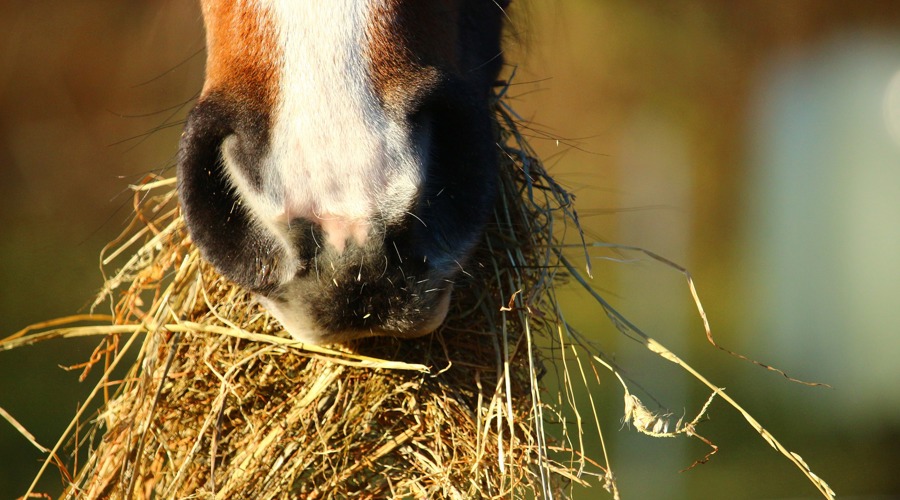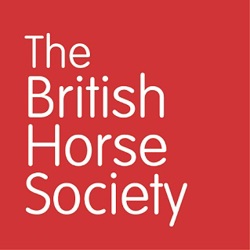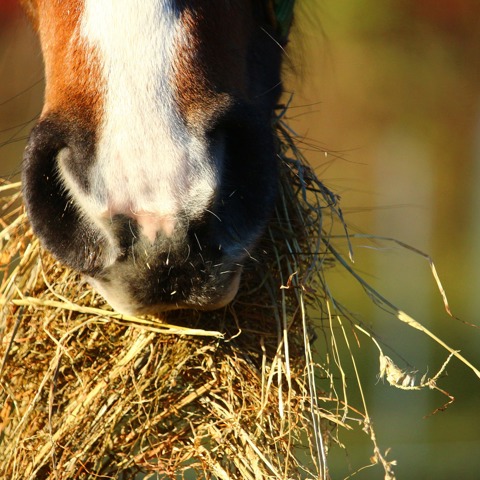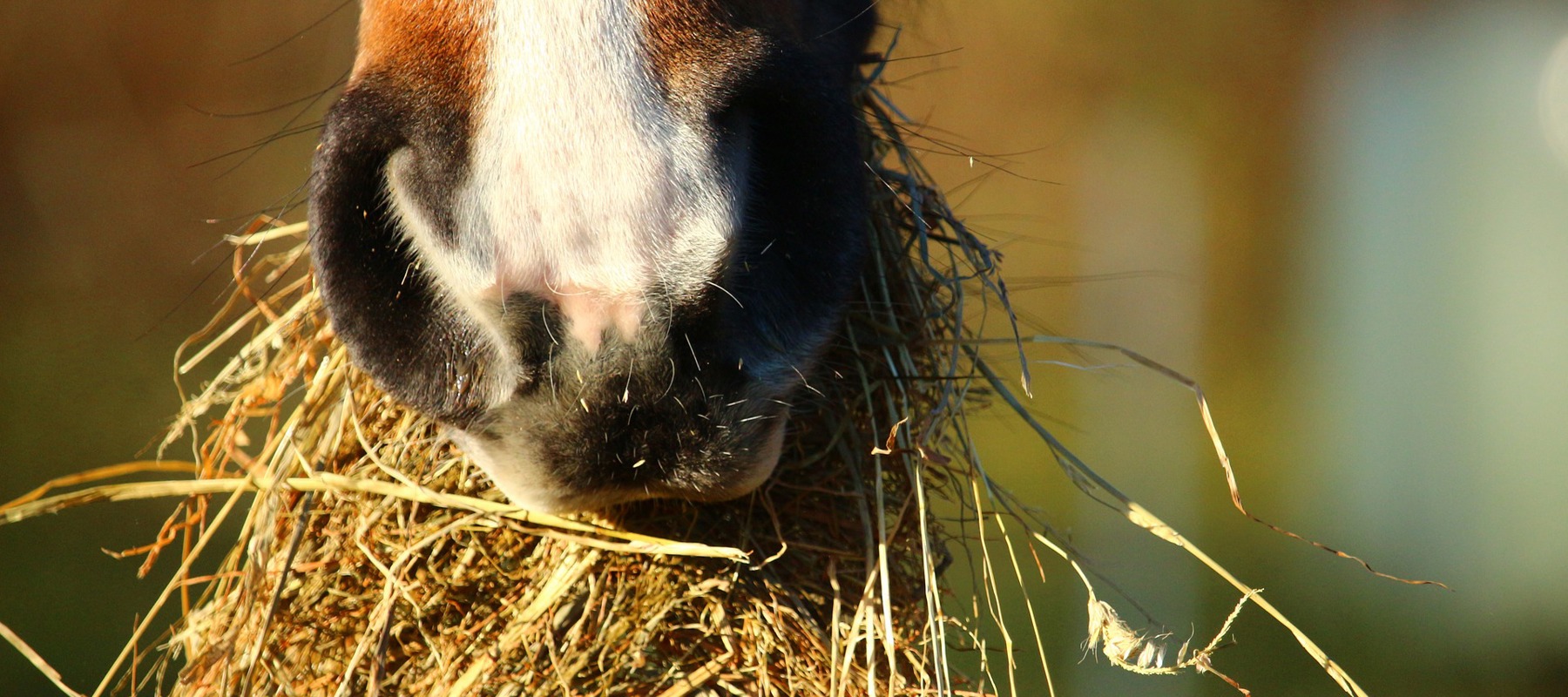Anatomy
Horses have evolved to trickle feed daily for up to 18 hours, and as a result the digestive system produces a steady flow of acid throughout the day, even when the horse isn’t eating1. In comparison to their size, a horse’s stomach is small (roughly the size of a rugby ball)2 and can hold 8- 12 litres of stomach contents. It can be broadly split into two sections which are lined differently.
The upper part of the stomach is known as the squamous mucosa. The cells in this section don’t secrete any stomach acid or mucus. The lower portion of the stomach is called the glandular mucosa and secretes stomach acid and enzymes to help start digestion. To protect the stomach wall, the glandular mucosa is lined with a thick layer of mucus.
What causes gastric ulcers?
The way in which we manage our horses and available facilities may make it more difficult to mimic their natural way of living, for example restricted time out at pasture and increased time stabled during the winter. Risk factors to be aware of include:
- Extended periods of time where forage may not always be readily available for example being stabled, during exercise or transportation. This limits the blood flow to the digestive tract and increases the amount of excess acid causing it to ‘splash’ onto the squamous mucosa region
- High concentrate feeds, especially if a low amount of forage is fed. When a horse digests a high concentrate feed, volatile fatty acids and lactic acid are produced which contributes to lower environmental pH, making the stomach even more acidic
- Stress such as intensive exercise, travelling, having limited interaction with other horses or restricted turnout
- The horse being given high volumes of anti-inflammatory medications such as Bute for extended periods of time. This is because the drug reduces the amount of prostaglandin being produced. With reduced prostaglandin, this in turn causes a decrease in blood flow to the stomach lining, increases acid secretion and reduces bicarbonate production3. This combination increases the likelihood of ulceration.
Signs of gastric ulcers
Some horses will make it very clear that they’re unhappy and uncomfortable, however some horses may show no signs at all due to their natural stoic behaviour. Signs include:
- Weight loss
- Dull, depressed demeanor
- Reduced performance
- Resistance to aids when ridden
- Grumpy or aggressive behavior when girthing, rugging or grooming
- Colic type signs
- Reduced appetite
- Chronic diarrhea – most common in foals
- Teeth grinding
- Crib biting.
Diagnosis
The only way to diagnose if a horse has ulcers, is for a vet to perform a gastroscopy4. The horse will usually have to be fasted for a minimum of 12 hours before the procedure to make sure the stomach is empty, so clear images can be produced.
The procedure is performed under sedation and a long tube with a camera placed at the end is passed up the horse’s nose, into the stomach via the oesophagus. This is normally a fairly pain free procedure which is often tolerated well by a sedated horse.
The vet will then be able to see images inside the horse’s stomach to determine if there are any ulcers present, which region they’re in, assessed and graded depending on their severity. This will help to determine a treatment plan based on the individual needs of the horse.
Treatment
Due to the high fibre, low starch diet horses have evolved to eat, they would be producing a lot of saliva throughout the day from chewing. Saliva acts as a buffer to the stomach acid helping to raise the overall pH and therefore reducing the acidic conditions.
During exercise, acid can often splash the top third of the horse’s stomach. To prevent this from happening, feed your horse an average sized scoop of forage, such as chaff or approximately 2kg2 of hay/haylage before exercise (as shown below). Not only does this help to prevent excess acid from potentially damaging the stomach lining, but it also means that blood flow is still directed to the digestive system to aid breakdown of fibre.
 play-circle
play-circle
Watch
Simply offering your horse more turnout doesn’t always mean that the ulcers will fix themselves. There needs to be sufficient grass cover when grazing to be able to support the trickle feeding aspect of the horses’ natural lifestyle.
For severe cases, medication such as Omeprazole may be given. This drug is used to suppress the secretion of stomach acid5, in this case hydrochloric acid in the bottom two thirds of the stomach. By suppressing acid release, this gives the already damaged tissue time to heal.
A gastroscopy will need to be repeated to make sure treatment is improving the condition. Always follow veterinary advice.
Prevention
Prevention is always better than cure and with EGUS there are some simple practices which can be followed to reduce the likelihood of ulcers occurring:
- Providing your horse with as much turnout as possible to mimic natural behavior – making sure that grazing is of good quality or providing additional forage where necessary for example, if your horse is on a controlled diet
- Providing enough forage throughout stabled periods. This doesn’t necessarily mean feeding more forage but slowing down the horse’s intake through enrichment or slow feeder haynets. Ideally your horse should not be left for prolonged periods of time without access to a forage source
- Monitor your horse’s weight and behavior closely to be aware of any sudden changes
- If your horse needs to be fed a concentrate feed, split the amount into as many meals per day as possible. Speak to a nutritionist to make sure you are feeding the correct requirements for your horse and limiting the intake of starch
- Feeding forage or fibre such as hay or chaff 30 minutes prior to exercise to all horses whether stabled or field kept
- Reduce stress wherever possible. Be aware of the triggers for your horse and try to minimise these occurring
- Change diets carefully and gradually, over a minimum of 10-14 days
- Provide a constant supply of clean drinking water.


